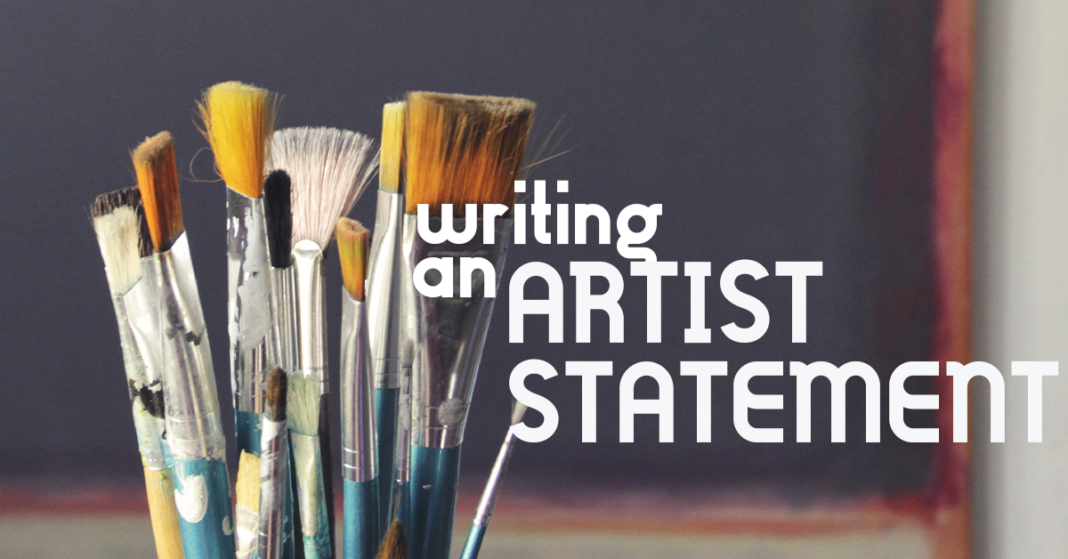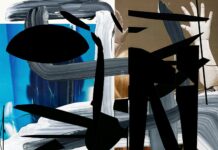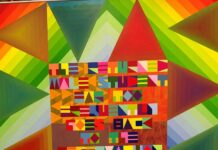Written by Joely Rogers
I used to dread talking about my art. As a full-fledged introvert, I’m not a big talker to begin with, and having to explain out loud what seemed obvious was especially taxing. Apparently I’m not alone; many artists tend to be non-verbal communicators. But the hard reality is that your art doesn’t speak for itself — it needs context.
I have long since realized how useful an artist statement can be in clarifying the how and the why we became artists. Writing an artist statement gives you the opportunity to talk about your art: the technical processes of how you make it, plus why you feel compelled to create and show your work to the world. Think of it as a powerful stand-in for your professional voice in print media.
Sharing the how and why of your art
All art needs a basic description and most of it needs some type of clarification. This doesn’t mean telling the viewer how they should experience your art. It means taking the time to explain how and why you create your art, and what it means to you personally. Also, why do you want to share this stuff? It can be equally meaningful (and infinitely easier) to create for just yourself; I did this for about 37 years. What is motivating you to make it public?
With this in mind, I’ll share with you my process of crafting a basic artist statement. I’m calling it “basic” because the audience for this post is either someone who has never written an artist statement, or those who might be looking for ways to tweak their current one.
What is an artist statement?
In general, an artist statement is a formal introduction to your work. It should be a work-in-progress document about your art, stating your focus, outlining the materials and methods used to create your art, and reflecting on why you create it.
What voice should it be written in?
First person — think “I” or “me” statements.
How long should it be?
One to five paragraphs is a typical range. I tend to favor brevity and think one to three carefully worded paragraphs can convey all your information. Make every word count!
What should it include?
• Your materials/media
• Subject matter(s)
• Your process/methods
• Your purpose/why are you doing this?
What should it omit?
• Specific biographical information — general is okay if it helps with clarification. Your artist biography is the place for more details about your life.
• Outside quotes or opinions about your art.
• Your personal philosophies — it’s a statement, not a manifesto.
Helpful tips:
• Be brief. Get to the point.
• Use simple language. How would you describe your artwork to a child, a completely non-artistic person, your family, etc. Start with a simple framework, and then create a few versions for different audiences.
• Be honest. Share the reason behind your obsession with drawing/painting/photographing a sunset, flowers or a slice of crispy bacon.
• Remind yourself that your artist statement is not a static document. You should update it as your artwork evolves.
Write your artist statement: a journal exercise
Unsure where to start? Use the following prompts to kickstart your thinking. Write down your answers because writing forces clarity.
• How would you describe your art? What is your subject matter or focus?
• What material(s) do you use to make your art?
• Describe the method(s) used to create your art?
• What does your art mean to you? Why are you creating it?
• How do you get inspiration?
• Who is your intended audience, and what are the goals/hopes of sharing your art?
My artist statement as an example
This is my most current artist statement. It’s a work in progress, but I’ve done my best to convey as much information as possible in one succinct paragraph. Remember that your artist biography is the place to give lots of details about yourself as an artist.
Food is life, and life is art. I use colored pencils and digital media to create art and illustrations focused on food and ingredients. My colorful drawings show the beauty of food, while digitally added typography provides both practical information and commercial appeal to the viewer. I see my drawings and illustrations as stories or snapshots of daily life, rather than just strictly art, and it is my hope that they will encourage viewers to think more deeply about food. For inspiration, I read constantly and eat voraciously. I am also inspired by memories of my rural upbringing where we grew our own vegetables, ate local meat and seafood, and faithfully recreated traditional recipes.
Source: https://www.framedestination.com/blog/resources/how-to-write-an-artist-statement?fbclid=IwAR01Dth_Vn5EN4lfteA9lNh8rDur3aYfpbgyhi21zTaYjTCUqtAEWtx4vTg












